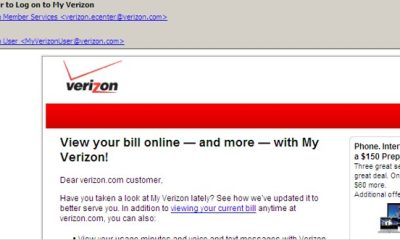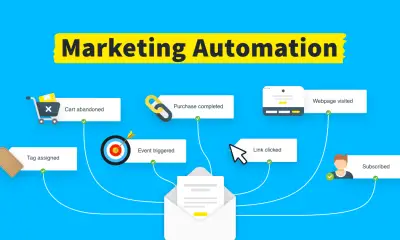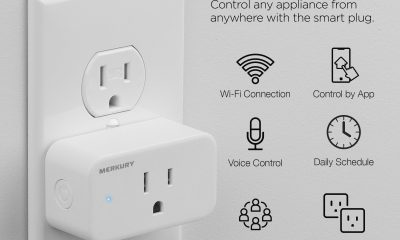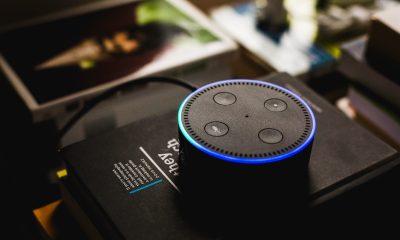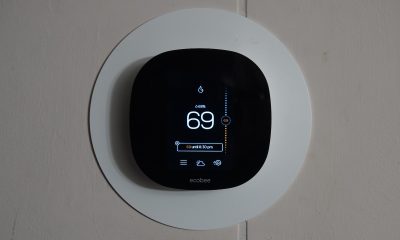Gadgets
Marketing Automation: A Complete Guide to Smarter Growth

Introduction
In today’s digital marketplace, speed, personalization, and efficiency are no longer optional—they are essential. Marketing automation has emerged as one of the most powerful tools for businesses to scale their efforts, engage customers, and drive revenue without overwhelming teams with manual tasks. Yet, automation is not just about technology—it’s about strategy, trust, and delivering value at the right time.
This guide will walk you through what marketing automation is, why it matters, best practices for success, common challenges, and how to align your efforts with principles of experience, expertise, authority, and trust (E-E-A-T). Whether you’re a small business owner, a marketer, or part of a large enterprise, you’ll learn how to turn automation into a real driver of growth.
What Is Marketing Automation?
Marketing automation is the process of using technology to streamline, manage, and measure marketing tasks and workflows. Instead of manually sending every email, scheduling social posts, or tracking leads, automation platforms handle these repetitive processes while ensuring messages are timely, relevant, and personalized.
The purpose of automation is twofold:
-
Efficiency – Reduce manual workload, save time, and minimize errors.
-
Personalization – Deliver tailored communication that speaks directly to the needs and behaviors of each customer.
Automation often includes:
-
Email campaigns
-
Lead nurturing and scoring
-
Social media scheduling
-
Customer segmentation
-
Campaign analytics and reporting
-
CRM integration
-
Multi-channel marketing workflows
Why Marketing Automation Matters
Marketing automation is no longer a “nice to have”—it’s a competitive advantage. Here’s why:
-
Time savings: Automating routine tasks allows marketers to focus on strategy, creativity, and innovation.
-
Personalization at scale: Messages can be customized for thousands of customers based on their interests, behaviors, or purchase history.
-
Better lead management: Automation nurtures leads from awareness through decision, ensuring no opportunity slips through the cracks.
-
Improved consistency: Automation maintains brand voice and timing across all channels—email, SMS, social media, and more.
-
Smarter insights: By tracking every interaction, businesses gain valuable data for optimization and growth.
Best Practices for Effective Marketing Automation
To get results from automation, you need more than just software. You need a plan. Here are the best practices:
1. Set Clear Goals
Identify exactly what you want to achieve. Do you want to generate more leads, increase conversions, retain customers, or improve engagement? Each goal requires different workflows and metrics.
2. Know Your Audience
Strong automation begins with understanding your customers. Build detailed buyer personas based on demographics, behaviors, and preferences. When you know your audience, you can craft relevant messages that resonate.
3. Map the Customer Journey
Automation should guide prospects through the buyer’s journey. Map out the stages—from awareness to consideration to decision—and design workflows that provide value at each step.
4. Segment Your Lists
Not every customer is the same. Divide your audience into segments based on factors like purchase history, activity, or lifecycle stage. This ensures your messages feel personalized rather than generic.
5. Integrate Your Tools
Your automation platform should connect with your CRM, website, analytics, and other tools. Integration ensures accurate data, prevents duplication, and makes personalization seamless.
6. Start Simple, Then Expand
Don’t overwhelm your system with complicated workflows at the start. Begin with essentials like welcome emails, abandoned cart reminders, or re-engagement campaigns. Scale up gradually as you learn.
7. Test and Optimize
Automation is not “set and forget.” Test subject lines, timing, and content regularly. Use A/B testing and adjust based on performance. Continuous optimization is key.
8. Maintain Data Hygiene
Outdated or duplicate data leads to wasted effort. Regularly clean your lists, remove inactive users, and verify accuracy. High-quality data ensures accurate targeting.
9. Align Sales and Marketing
Automation is most effective when sales and marketing teams work together. Define what qualifies as a lead, set shared KPIs, and ensure smooth handoffs between teams.
10. Focus on Customer Experience
Automation should feel helpful, not robotic. Messages should provide value, not spam. Always put the customer experience first.
Common Challenges in Marketing Automation
Even with the right strategy, challenges can arise. Here are the most common and how to overcome them:
-
Poor data quality: If your database is messy, automation delivers poor results. Fix it by standardizing formats and regularly cleaning your lists.
-
Tool overload: Some businesses adopt platforms with too many features they don’t need. Always choose tools that match your specific goals and team capabilities.
-
Over-automation: Automating every message can feel impersonal. Balance automation with authentic, human interaction.
-
ROI measurement: Tracking return on investment can be complex across multiple touchpoints. Define clear metrics and use dashboards to monitor performance.
-
Lack of alignment: If sales and marketing don’t share goals, automation workflows can break down. Foster collaboration between teams to stay on track.
Marketing Automation and E-E-A-T
Search engines and users value businesses that demonstrate expertise, authority, and trustworthiness. Automation can help build these pillars if done right:
-
Experience: Use customer stories, feedback, and data-driven insights in your automated campaigns.
-
Expertise: Provide educational content—such as guides, webinars, or case studies—through automated sequences.
-
Authority: Share success metrics, showcase certifications, and highlight industry recognition in campaigns.
-
Trust: Be transparent about data usage, give clear opt-out options, and ensure compliance with privacy regulations.
Example Workflow: Customer Onboarding
Here’s a practical example of how marketing automation works:
-
Trigger: A customer signs up for a free trial.
-
Day 1: Send a welcome email with a quick start guide.
-
Day 3: Share tips on how to use the product effectively.
-
Day 5: Send a case study showing how others achieved success.
-
Day 7: Offer a special discount to upgrade.
-
Day 10: Follow up with a reminder and direct link to upgrade.
This workflow nurtures the relationship, educates the user, and increases the chance of conversion.
Read More: Boylecheloid Flower: Myth, Meaning & Its Real Identity
Conclusion
Marketing automation is more than a technological shortcut—it’s a growth engine when used strategically. By automating repetitive tasks, you free up time to focus on creativity, innovation, and human connection. But automation is only as effective as the strategy behind it. Without clear goals, clean data, and thoughtful execution, it risks becoming noise instead of value.
The most successful businesses use automation to enhance—not replace—the customer experience. They focus on personalization, transparency, and continuous improvement. When you align automation with E-E-A-T principles—showing expertise, building trust, and delivering genuine value—you not only scale your marketing but also strengthen your brand reputation.
Start small, refine often, and keep the customer journey at the center of your strategy. Done right, marketing automation can transform your business into a smarter, more responsive, and more trusted brand.
FAQs
1. What is marketing automation?
It is the use of software tools to automate repetitive marketing tasks like sending emails, segmenting customers, managing leads, and tracking campaign performance.
2. How does marketing automation work?
Automation works by setting up workflows and triggers. When a customer takes an action—like visiting a page or abandoning a cart—the system automatically sends a targeted message or follows up.
3. What are the benefits of marketing automation?
Key benefits include saving time, improving lead nurturing, personalizing customer experiences, boosting conversions, and gaining detailed insights into campaign performance.
4. Can small businesses use marketing automation?
Yes. Small businesses can start with simple workflows such as welcome emails, abandoned cart reminders, or follow-up messages, and scale as they grow.
5. What mistakes should I avoid with marketing automation?
Avoid over-automating, neglecting data quality, choosing tools that don’t fit your needs, and failing to monitor performance. The best automation feels natural and customer-focused.
-

 Gadgets3 years ago
Gadgets3 years agoDoes Nest Thermostats Contain Cameras Or Microphones? Is It Safe For you?
-

 Guides1 year ago
Guides1 year ago10 Best Apps To Control All Your Smart Home Devices.
-
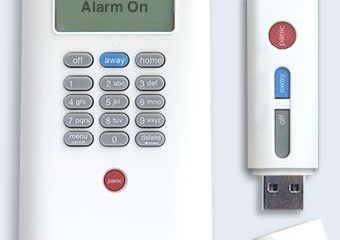
 Gadgets3 years ago
Gadgets3 years agoWhat Is The Purpose Of Red Button On The SimpliSafe Keypad?
-
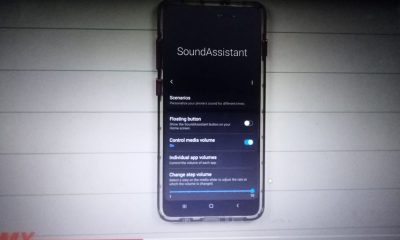
 Gadgets3 years ago
Gadgets3 years agoComplete Guide About Equalizer settings for Samsung-Soundbar
-

 Accessories2 years ago
Accessories2 years agoBlink Camera’s Temperature Sensor Settings, and More
-

 Gadgets3 years ago
Gadgets3 years agoFitbit Symbols Meaning: What Do The Fitbit Icons Mean?
-

 Solutions3 years ago
Solutions3 years agoWhy is My Samsung TV Picture So Dark? Exploring the Possible Causes
-

 Accessories2 years ago
Accessories2 years agoCan Siri Control Samsung Televisions And Are Samsung TVs Homekit Compliant?


















































